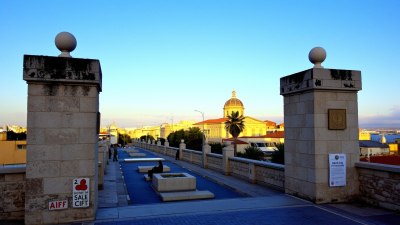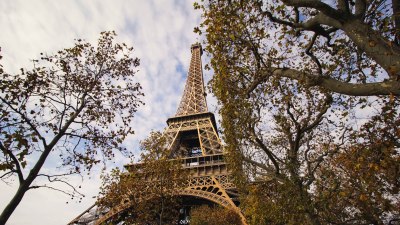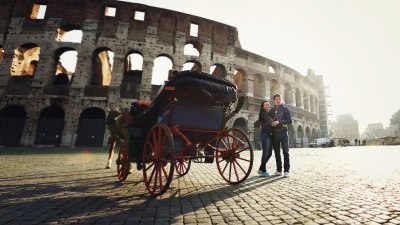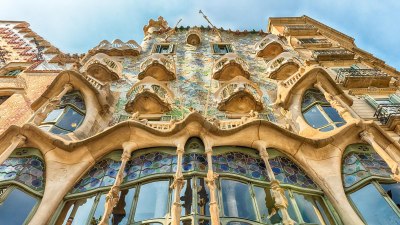Nicosia’s Divided City: Exploring Cyprus’s History
Discover the rich and complex history of Nicosia, Cyprus's divided city, and its cultural significance.

Image created with Flux Schnell
Nicosia, the capital city of Cyprus, holds a unique position in the annals of history. As the last divided capital in Europe, it bears witness to a complex and often turbulent past that reflects the island's geopolitical struggles. For centuries, Nicosia has been a crossroads of cultures, languages, and traditions, shaped by a myriad of invasions and influences. This article delves into the intricate history of Nicosia, exploring how its division came to be and what it means for its citizens and culture today.
The origins of Nicosia can be traced back to the ancient city of Ledra, which was established around 2500 BC. Over the years, it became a vital trade hub, attracting settlers from various civilizations, including the Greeks and Romans. Nicosia’s strategic location contributed to its growth, but also made it a target for invaders. In the medieval period, the city expanded its walls and transformed into a fortified settlement, particularly under the Lusignan dynasty in the 12th century.
One of the hallmarks of Nicosia’s history is its diverse cultural tapestry. During the Ottoman rule from 1570 to 1878, the city witnessed the coexistence of Greek Orthodox Christians and Muslims, leading to a unique blend of architectural styles and traditions. The Ottomans left a significant architectural legacy in Nicosia, including mosques, hammams, and other public buildings that still stand today. The influence of the Ottomans contributed to Nicosia's rich culinary landscape, introducing new flavors and dishes.
However, the discovery of vast copper mines in Cyprus during the 19th century shifted the balance of power. The British took over the administration of Cyprus in 1878, leading to significant changes in the societal structure. Many Cypriots, especially Greek Cypriots, began to aspire for enosis, or union with Greece, while Turkish Cypriots sought to maintain their ties to Turkey. This rising nationalism laid the groundwork for future conflicts.
In 1960, Cyprus gained independence from British colonial rule, establishing a bicommunal partnership between Greek and Turkish Cypriots. Nicosia was designated as the capital of the newly formed Republic of Cyprus. However, underlying tensions persisted, and violent clashes erupted between the two communities. The 1974 coup d'état by Greek Cypriots, aimed at achieving enosis, prompted a military intervention by Turkey, which resulted in the division of the island and the establishment of the Turkish Republic of Northern Cyprus (TRNC), recognized only by Turkey.
The division of Nicosia effectively split the city into two parts: the predominantly Greek Cypriot south and the Turkish Cypriot north. A United Nations buffer zone, known as the Green Line, was established to separate the two communities. This division not only altered the demographic landscape but also significantly affected the cultural heritage of the city. Numerous buildings, once cherished landmarks, fell into neglect and disrepair as the city struggled to cope with the impact of division.
Despite the physical barriers, efforts have been made to bridge the divide. In recent years, initiatives promoting cultural exchanges, joint projects, and peace-building activities have emerged. The opening of checkpoints in 2003 allowed citizens from both sides to cross the divide for the first time in decades, fostering interaction and understanding.
The Cultural Significance of Nicosia
Nicosia is rich in cultural heritage, characterized by its eclectic mix of architectural styles that reflect its diverse history. The Venetian walls, built in the 16th century, encircle the old city, alongside stunning examples of Gothic churches and Ottoman mosques. The Selimiye Mosque, originally a cathedral, is one of the most important landmarks, embodying the city’s multifaceted identity. On the other hand, the Church of St. John’s is a stunning representation of the Byzantine influence.
The archaeological museums in Nicosia play a crucial role in preserving the island's rich history. The Cyprus Museum houses artifacts from prehistoric to classical times, offering insights into the island’s ancient civilizations. This cultural preservation is vital for fostering a shared understanding of the diverse histories that shape Nicosia.
The culinary scene in Nicosia is another testament to its cultural fusion. Traditional Cypriot dishes such as moussaka, souvlaki, and halloumi reflect both Greek and Turkish influences, making it a gastronomic delight. The city's vibrant street markets offer a range of local produce, spices, and delicacies, inviting residents and visitors alike to experience Nicosia's flavor.
Challenges and Road to Reconciliation
The path toward reconciliation in Nicosia has been anything but straightforward. Low-level tensions still simmer as various political factions hold differing views on the future of Cyprus. The absence of a comprehensive solution has fostered feelings of mistrust and fear among communities. Moreover, the economic disparities between the two parts of the city complicate any reconciliation efforts. The Turkish Cypriot economy has faced significant challenges since the division, leading to a reliance on Turkey for support.
International organizations and peace initiatives continue to strive for dialogue and understanding between the two communities. The role of NGOs and grassroots movements emphasizing cooperation and cultural appreciation is crucial in shifting the narrative away from division. Collaborative projects involving artists, historians, and community leaders aim to bridge gaps and create a shared vision for the future of Nicosia.
As the city navigates its complex landscape, the perspectives of the younger generation emerge as a beacon of hope. Many young Cypriots, aware of their shared history, yearn for a united future. They engage in initiatives prompting dialogue and understanding, using the power of social media to connect with one another across the divide.
Future Prospects for Nicosia
The prospects for Nicosia's future rest heavily on the success of continued dialogue and mutual understanding. Increased cultural exchanges and economic collaboration can pave the way toward reconciliation, potentially leading to a reunification that is acceptable to both communities. Such an outcome would not only enhance the quality of life for all Cypriots but also bolster the island's position on the global stage.
The role of the European Union can also be pivotal as Nicosia continues to chart its path forward. With Cyprus being an EU member since 2004, the EU's support for peace-building initiatives and economic development can aid in bridging the divide. Investments in joint ventures, infrastructure projects, and tourism can invigorate both parts of the city, creating a win-win situation for all.
The resilience of Nicosia's inhabitants plays a vital role in the city’s future. Each day, individuals strive to reclaim their shared identity while acknowledging the historical grievances that exist. By fostering dialogue, nurturing community bonds, and championing a narrative of shared history, Nicosia can emerge as a symbol of reconciliation and unity.
Nicosia stands at a significant crossroads in its history. The juxtaposition of a vibrant culture and the stark reality of division presents both challenges and opportunities. As the residents of Nicosia work toward understanding and reconciliation, the city may yet fulfill its potential as a united metropolis, fostering harmony between its diverse communities. The shared history and cultural heritage of Nicosia serve as a reminder that while divisions may exist, the strength of unity can pave the way for a brighter future.











